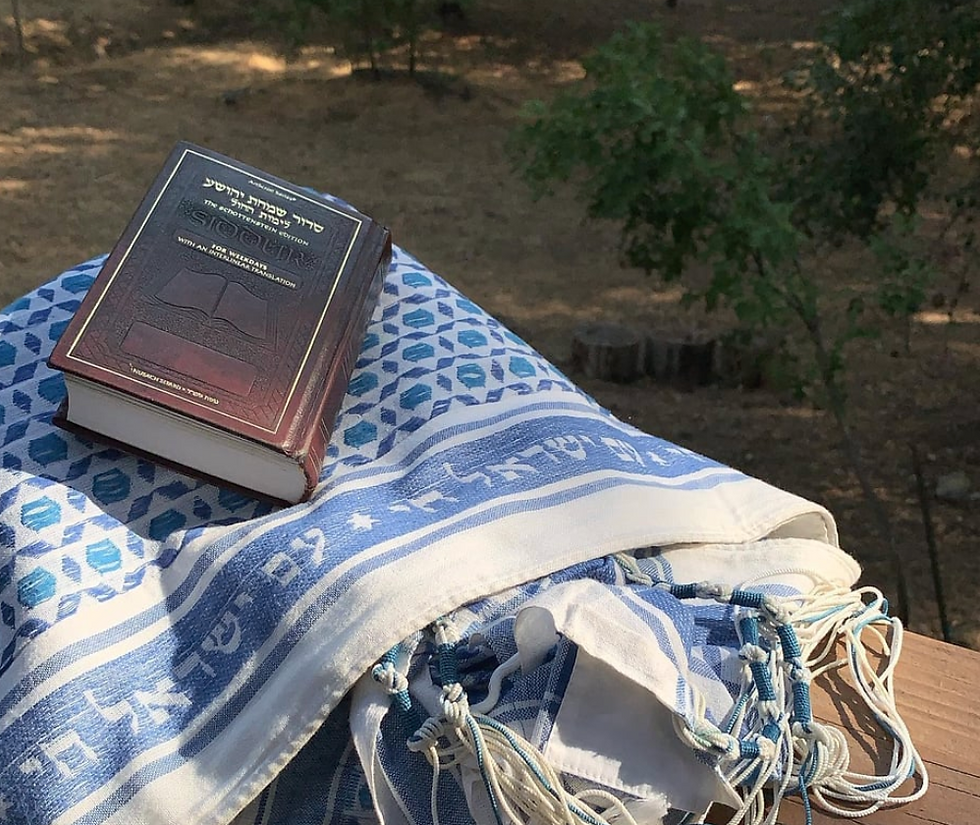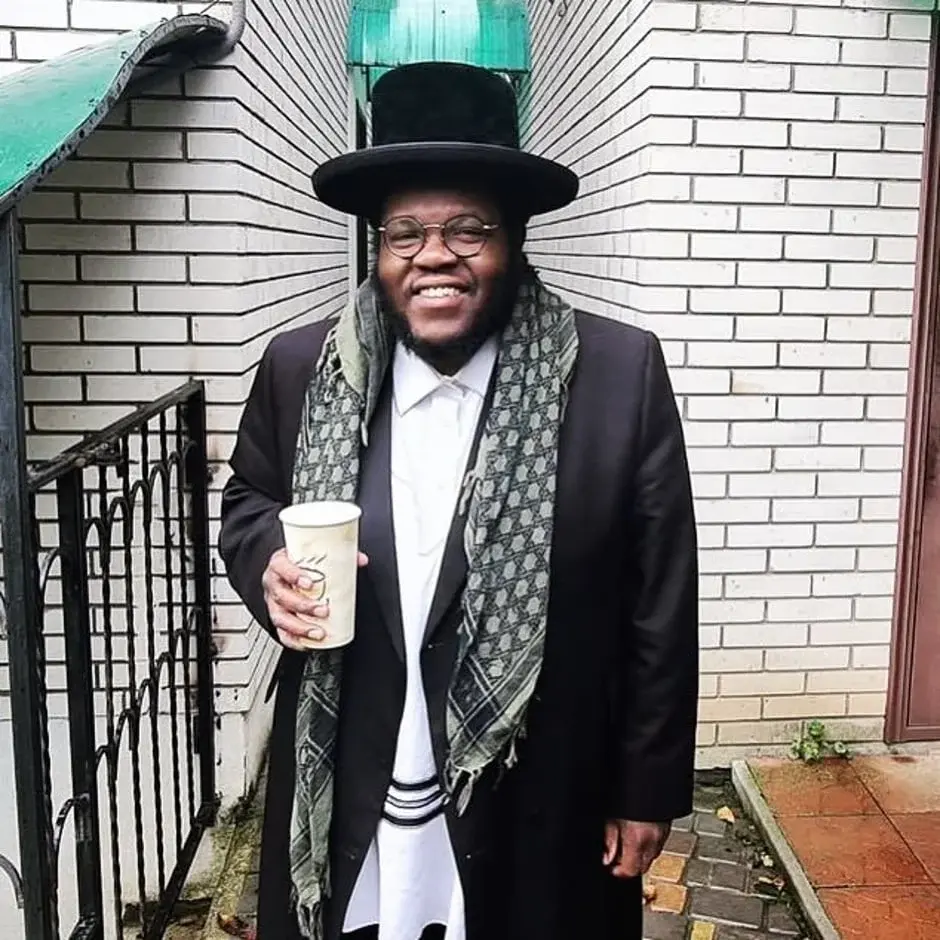Talis vs. Tallit: Understanding the Differences in Jewish Prayer Shawls
- 906705

- Aug 21, 2024
- 5 min read
Updated: Aug 22, 2024
If you've ever been curious about the rich tapestry of Jewish culture and spirituality, you might have come across two terms: Talis and Tallit. These terms refer to distinct but closely related aspects of Jewish prayer shawls. At Semitic Tribes, we are passionate about preserving and celebrating our shared heritage, which is why we offer a range of products, including Sudra scarves, Talis prayer shawls, and logo caps, all rooted in the traditions of Semitic peoples, including Jews and Arabs. In this blog post, we'll explore the historical evolution of Talis, from Sudra fabric to religious attire, and provide you with a step-by-step guide on the art of wearing a Talis.

The Historical Evolution of Talis: From Sudra Fabric to Religious Attire
A Journey Through Time
To truly appreciate the significance of the Talis, we need to delve into its historical evolution. The Talis has its roots in the ancient Sudra, a type of scarf or kerchief that played a pivotal role in connecting Semitic people, including Jews and Arabs, to the land of Eretz Israel. This humble piece of fabric not only served as a functional garment but also held profound cultural and spiritual significance.
The Sudra's Role in Identity
The Sudra was more than just a piece of cloth; it was an authentic representation of how Jews used to dress. It symbolized a connection to their homeland, their history, and their identity as a people. The Sudra was woven into the very fabric of Jewish life, providing a tangible link to the past and a reminder of their heritage.
Transformation Into the Talis
Over time, the Sudra evolved into what we now know as the Talis. While the basic function of covering oneself during prayer remained, the Talis underwent significant changes in design and purpose. It became a distinctive religious garment, marking the wearer's commitment to Jewish faith and tradition.
Modern Interpretations
Today, the Talis continues to be a symbol of Jewish identity and devotion. Its design may vary, but its essence remains unchanged. At Semitic Tribes, we offer a range of Talis prayer shawls that fuse tradition with modern aesthetics, providing you with unique and authentic religious attire. Each Talis we create serves as a reminder of our shared history, purpose, and mission as Jewish people.
The Art of Wearing a Talis: A Step-by-Step Guide
Step 1: Set the Mood
Before donning your talis, it's essential to prepare your mind and heart for prayer. Find a quiet and sacred space where you can focus on your connection with the Divine. Light a candle, if that's your tradition, and take a moment to center yourself.
Step 2: Unfurl Your Talis
Gently unfold your talis, being careful not to let it touch the ground. Hold it up with both hands, allowing it to hang evenly over your shoulders. The fringed corners should fall over your arms, reminding you of the commandments and traditions.
Step 3: The Blessing
Recite the blessing for putting on the talis. The words may vary depending on your tradition, but the essence remains the same: a declaration of your commitment to fulfilling the mitzvah of wearing the Talis.
Step 4: Draping
Place the talis over your head and let it rest on your shoulders. Ensure that it covers your back and front evenly. Some traditions involve draping it over your head three times, symbolizing the three-fold cord of Ecclesiastes 4:12.
Step 5: Heartfelt Prayer
With your talis draped around you, engage in your prayer or meditation. Let the soft fabric serve as a physical reminder of your spiritual connection and commitment to your faith. Allow the fringes to sway gently as you pray, adding a sensory element to your devotion.
The Unique Appeal of Talis: A Closer Look
When it comes to embracing one's cultural and spiritual identity, the Talis holds a unique place in the hearts of many Semitic individuals, including Jews and Arabs. In this section, we'll delve deeper into what makes the Talis so special and why it continues to be cherished worldwide.
A Symbol of Unity
The Talis serves as a powerful symbol of unity among Semitic tribes. Regardless of individual backgrounds, when one becomes a Talis, they become part of a collective heritage that transcends borders and differences. It's a tangible representation of shared history, values, and traditions that connect people on a profound level.
A Testament to Resilience
Throughout history, Semitic communities have faced countless challenges and adversities. The Talis stand as a testament to their resilience and unwavering commitment to their faith and heritage. Its enduring presence in rituals and ceremonies showcases the strength of Semitic traditions that have been passed down through generations.
An Expression of Faith
Wearing a talos is not merely a matter of tradition; it's an expression of faith. When draped in this sacred garment, individuals are enveloped in a sense of holiness and devotion. The act of wrapping oneself in a talis before prayer is a profound gesture that signifies a direct connection with the Divine, a moment of quiet reflection, and a reaffirmation of one's beliefs.
The Elegance of Sudra Fabric
One of the unique aspects of our Talis products at Semitic Tribes is the use of Sudra fabric. Sudra, with its rich history and cultural significance, adds an extra layer of elegance and authenticity to our Talis offerings.
Sudra's Timeless Beauty
Sudra fabric has an inherent beauty that transcends time and trends. Its soft, breathable texture feels comforting against the skin, making it ideal for prayer and meditation. When you choose a talis made from Sudra fabric, you not only embrace your heritage but also experience the undeniable charm of this ancient material.
Connecting to the Land of Eretz Israel
Sudra fabric serves as a unique link to the land of Eretz Israel, a place of immense spiritual and historical importance for Semitic people. Wearing a talis made from Sudra fabric can evoke a sense of connection to this sacred land, even for those who may be physically distant from it.
Authentic Representation of Tradition
At Semitic Tribes, we take great pride in crafting Talis prayer shawls that authentically represent the way Semitic people, including Jews and Arabs, used to dress. Our Sudra-based Talis products pay homage to the traditions of our ancestors while allowing you to carry a piece of this heritage with you wherever you go.
Understanding the differences between Talis and Tallit is a journey through history and tradition. At Semitic Tribes, we embrace this heritage and offer products that reflect the depth of our shared culture. Whether it's our Sudra scarves, Talis prayer shawls, or logo caps, each item is a testament to our commitment to preserving and celebrating our rich Semitic traditions.
If you're interested in exploring our range of products or have any questions about the Talis, Sudra, or our brand, please don't hesitate to get in touch with us at bchertok7@gmail.com. We're here to connect, share, and celebrate the beauty of our cultural and spiritual heritage together.



